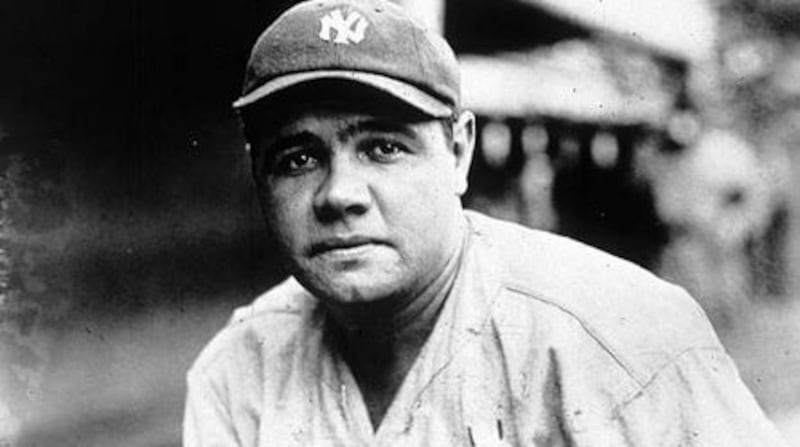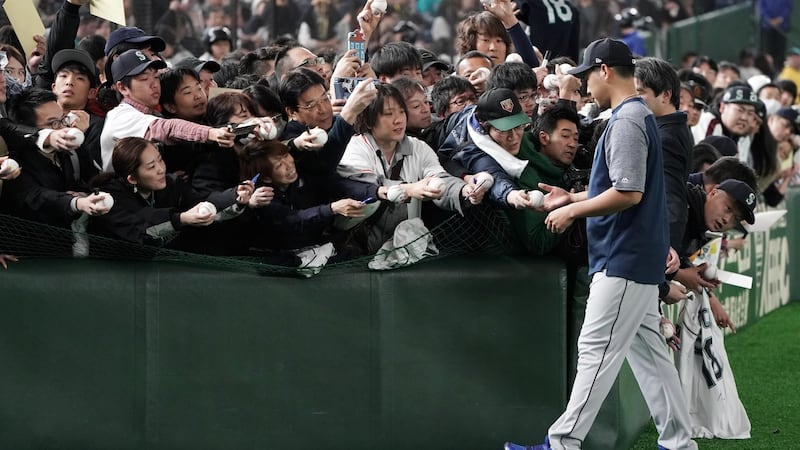In late 1970s England a carpenter’s son from predictable Beckenham decided to form a pop band with his brother and a few schoolmates, wisely changed his name from the sturdy-centre-half sounding David Batt to the altogether more otherworldly David Sylvian, named the band Japan and created an audacious sound and image which attracted a niche if devoted following.
They stuck around for eight years, finally elbowing their way into mainstream contention with their 1982 single Life In Tokyo, and then swiftly splitting up as soon as anything as vulgar as fame and success threatened to visit them.
Sylvian remained as he preferred; a shadowy figure on the periphery of British culture but his image was so singular that, as Jason Cowley shrewdly observed in a Guardian interview in 2005, “many people tried to look like him, from Nick Rhodes of Duran Duran to Lady Diana”.
And the strange thing is that you can’t walk 10 yards in any part of Tokyo during this World Cup without encountering a Tokyoite who is a dead ringer for David Sylvian. There are moments when you feel like the only outsider in a mass-movement “Japan” convention.
The street fashion is wild and fabulous and not limited to any age. There are more coolers per square inch in Tokyo than anywhere else on earth – with the arguable exception of Magans of Killashee of a busy bank holiday Sunday night.
It’s hard not to conclude that one of the reasons why rugby never fully gripped the Japanese imagination is that they were privately appalled by the limited opportunity to express their style. And that’s where baseball had them from “hello”.

National pastime
Just a few years before the Americans and Japanese became the most embittered of war-time enemies, the Japanese fell for baseball with a passion that arguably exceeded how the Americans felt about their national pastime.
Everything about the game seemed suited to the Japanese temperament. The ritual preparation and quirky habits of the pitcher, the unblinking concentration of the hitter, the slow-fast rhythm of the innings, and, best of all, the fact that baseball was unhurried: that the game ended when it was ready to end.
It’s impossible to quantify just how deeply Babe Ruth managed to embed himself in the Japanese consciousness when he was starred in a barnstorming exhibition of the country in the 1930s. What is generally accepted is that wherever he went the Japanese loved the big man: his garrulous nature, his witchery with the baseball bat, his gap-tooth grin and rambunctiousness.
In the 1940s, when television was limited, he must have seemed the embodiment of what “America” was. They loved him for it. And the Babe loved them back.
Half a million people lined the streets to greet the American stars in Tokyo alone. A plaque marks the spot where Ruth hit his first home run: it’s now located in a zoo in Sendai, about 90 minutes north of Tokyo.
The success of that tour, through 12 cities, led to the formation of Japan’s first ever professional baseball team and their domestic league grew from there.
Three months after the tour ended, Matsutaro Shoriki, a publisher who had financed the tour, was stabbed because of growing anti-American sentiment.
And when, in the second World War, Ruth, retired now and living in an apartment in Manhattan, heard about the bombing of Pearl Harbour, he took hold of a Japanese vase he had been gifted and flung it from his eleventh-floor window. Later Ruth bitterly disavowed his earlier compliments towards the Japanese, unable to reconcile their warmth with the bombing of his country.
Batting cages
But even as relations faltered, the American game never let go of the Japanese imagination. And here in Tokyo, once you move away from the busy intersections, one of the most common city sounds is the constant background thwack of baseball batting cages. They are all over the city, and sometimes you hear rather than see them because they are located three storeys up on the top of multi-storey car parks.
They seem to be busy day and night; just a square of precious space enclosed with green netting and a series of would-be diamonds where hitters return machine-thrown pitches.
Sometimes the batters are decked out in full gear but often its guys in white shirts on their way home from work who stop just to grab a half hour pleasure of hitting a baseball and forgetting about the city around them.
And baseball’s visibility is all over the street in Tokyo, where US and Japanese baseball tops and shoes are regular fashion items: just the other day on the train one goth-punk type was wandering the subway sporting a baseball glove as his accessory of choice.

Still, it remains hard to get your head around just how naturally baseball flows through the Japanese every day now. It has flourished in a way that other American sports never have.
Earlier this week the Houston Rockets and Toronto Rockets played an exhibition game on the fringes of Tokyo. It may have been scheduled as an afterthought to their more concentrated marketing tours of China. But it was the first NBA game in Japan for 16 years.
The Japanese market has befuddled basketball’s marketers. When they held the world championships here in 2006, they struggled to fill a 6,000-seater arena in Sapporo for a game featuring Yao Ming’s China and a USA team filled with NBA players.
Curiosity
Worse, it was reported that many of those who did show up out of curiosity left the arena so they could find a television on which to watch a big baseball game that was showing at the same time.
The selection of Rui Hachimura, the Toyama forward who was chosen as a first round pick by the Washington Wizards in June, is bound to pique national interest. But nothing will shift the affections from baseball.
Since the 1990s many of the best Japanese baseball players have been lured to play in the American league, bringing a full circle to Ruth’s tour of 90 years earlier. Inevitably the ready availability of the American league on television has created a kind of indirect competition for the domestic league. Either way, baseball is part of Japan now, on the fields and on the streets.
















